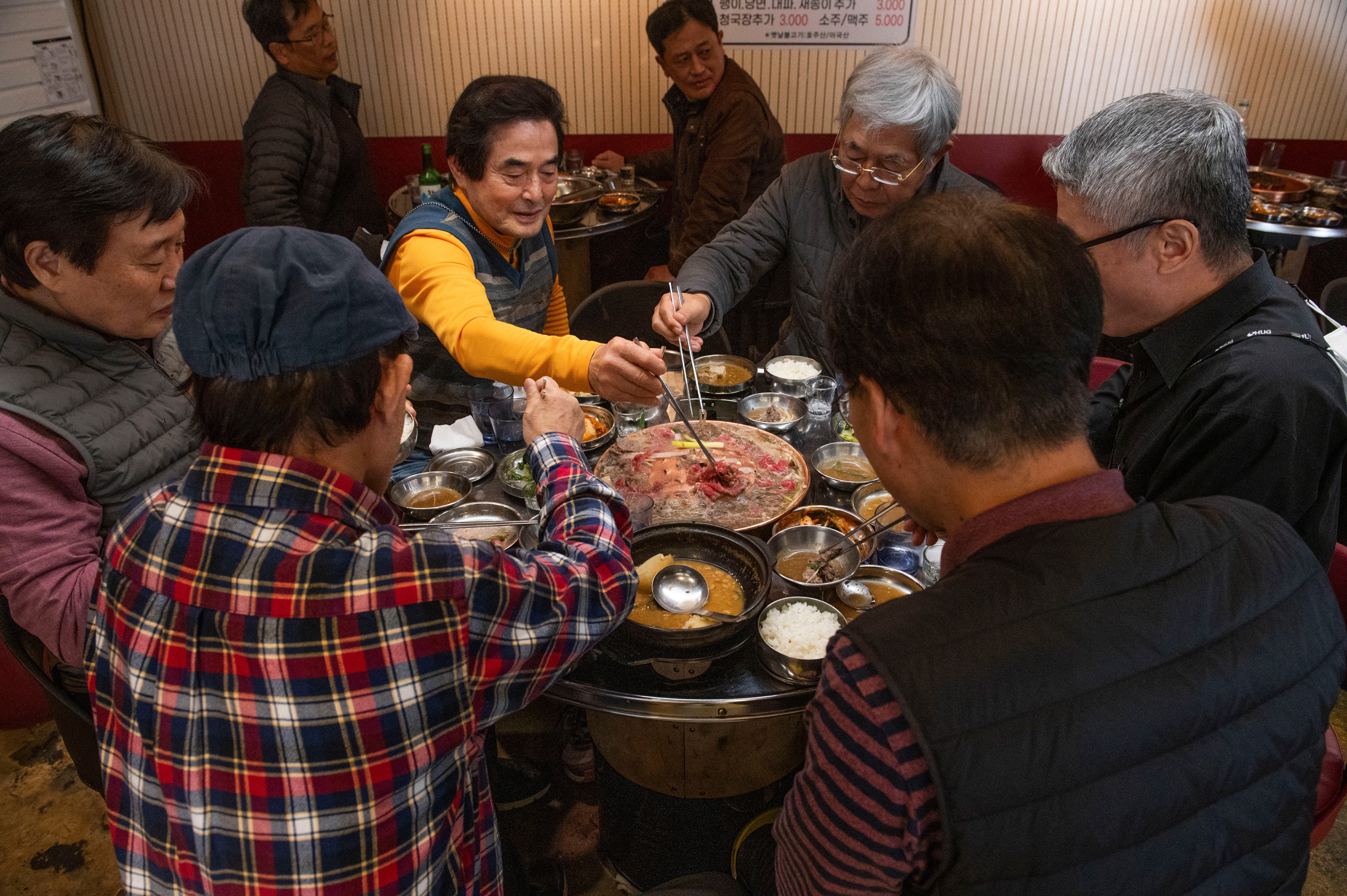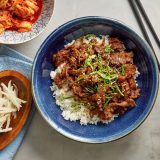The round, stainless tables at Daesang Bulgogi felt precariously close, a proximity accentuated by the roaring gas flame at the center of each, shallow trays of boiling broth above them, now and again sputtering and hissing. None of it perturbed the groups of retired men clustered around, enjoying a lunch lubricated by many rounds of half-liter bottles of Hite beer.
Restaurants in South Korea often specialize in one thing. Endless iterations of fried chicken, or bokkeumbap, a type of fried rice prepared at the table. Here it was bulgogi, a hugely popular and meaty DIY cook-at-the-table affair. It’s one of the most popular Korean culinary exports, and was one of the recipes that inspired my visit to Seoul.
Bulgogi is intimately communal. The tray set over the fire is domed with a trough around it. Ordering involves selecting your meat, the most popular being fatty beef that has been sliced paper thin and marinated in a savory-sweet blend of soy sauce, sugar, garlic, scallions, sesame oil and Asian pear.

As the tray heats, a waitress brings a pitcher of broth, which is poured into the trough. The meat arrives raw, accompanied by bowls of rice noodles, kimchi and enoki mushrooms. Each diner cooks their own meal, using chopsticks to set strips of meat on the center grill and mushrooms and noodles into the broth at the edge to simmer.
When the meat is cooked, you assemble your bowl, heaping everything over rice. The result is a delicious mix of tastes and textures, meaty and sweet, spicy and funky, the rice sopping it all up. When I ate it that day, the real treat was the surprise ending—the enriched broth created by the end of the meal spooned over the rice remnants.
Wonderful, but seemingly a stretch for home cooking. I’ll admit to briefly considering how to construct a gaspowered dining table like those at Daesang Bulgogi, but reality persuaded me to seek a better option. Luckily, South Korea has one, and chef Ryan Phillips was happy to teach me.
Cooking amidst the crops at his Bear Foot Gardens, a ramshackle farm in Suwon, 20 miles south of Seoul, Phillips said bulgogi actually can be prepared many ways. What matters is that the core of the dish is thinly sliced beef—the thin cuts a throwback to when tough, poor-quality meat was the only option—marinated and served with rice.
What I’d had was typical of restaurant-style bulgogi, said Phillips, a Korean American chef who moved to South Korea a couple decades ago to connect with his father’s roots. Home cooks transform the same flavors and ingredients into a skillet meal that delivers all the flavor, but with the ease of homestyle cooking.
To demonstrate, he used a mortar and pestle to prepare a marinade of finely chopped scallions, Asian pear—a common flavoring for meat in Korea because it has enzymes that help tenderize meat—mirin, toasted sesame oil, honey, garlic, soy sauce, brown sugar, ample black pepper and a generous sprinkle of sesame seeds. He tossed this with thinly sliced beef, which he said could marinate a few minutes, a few hours, even overnight. Up to you.
When ready to cook, he heated some oil in a skillet. When just smoking, he added the beef and briefly stir-fried it. In just minutes it was done and heaped over rice with a sprinkle of scallion greens and sesame seeds. The result was terrific, sweet and savory, meaty and tender. The rice once again creating the perfect sponge for all that flavor.
Delicious bulgogi, no fire-wielding tables needed.







